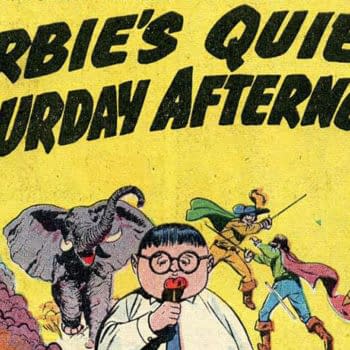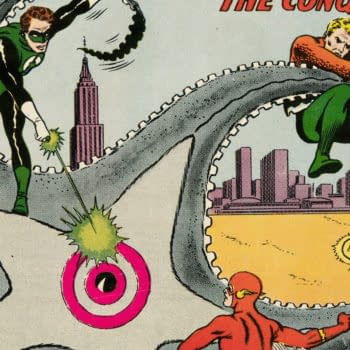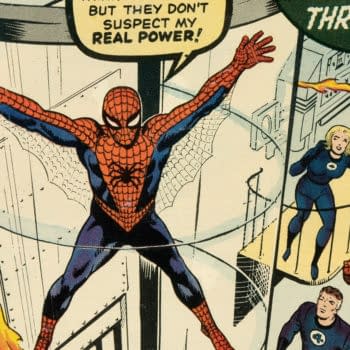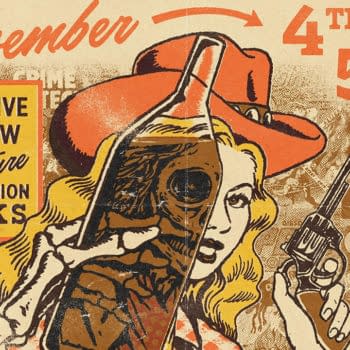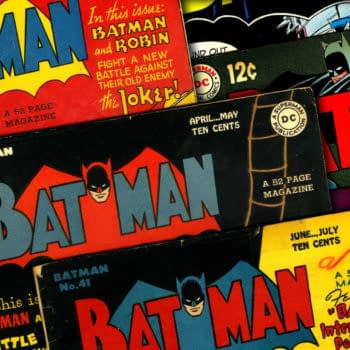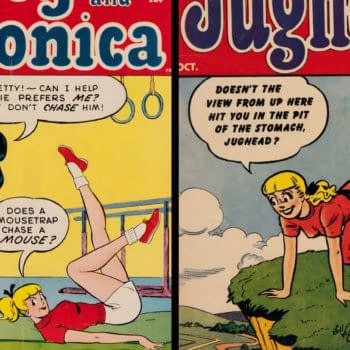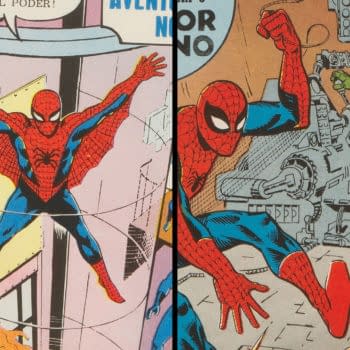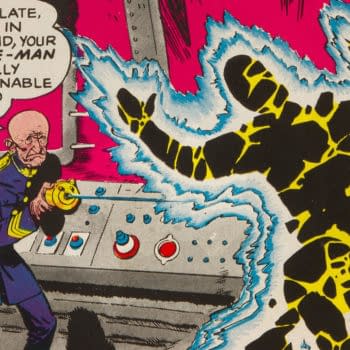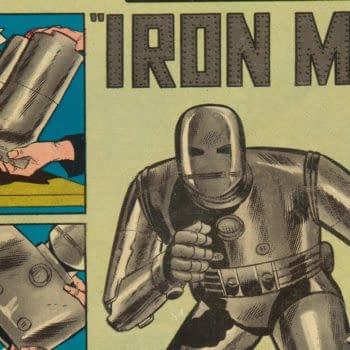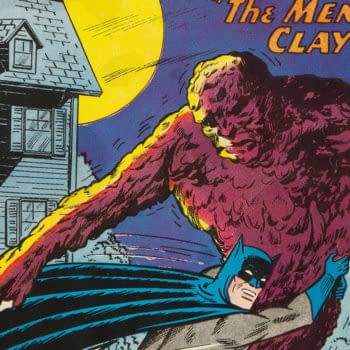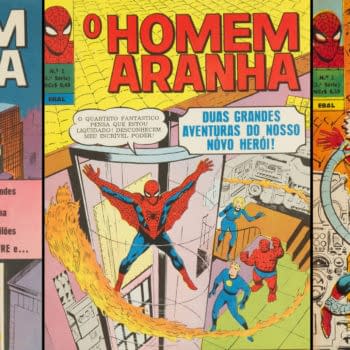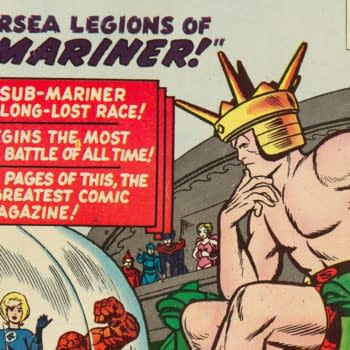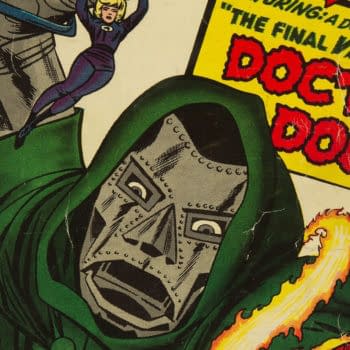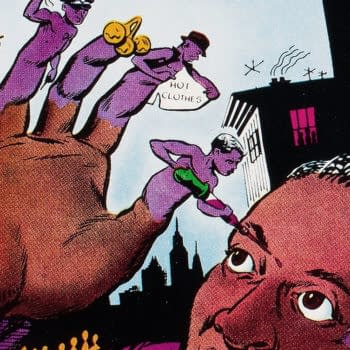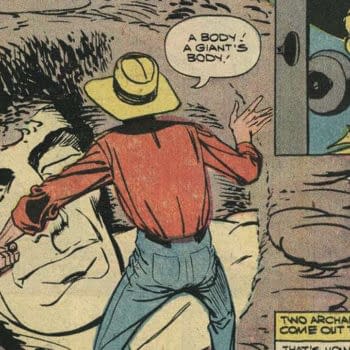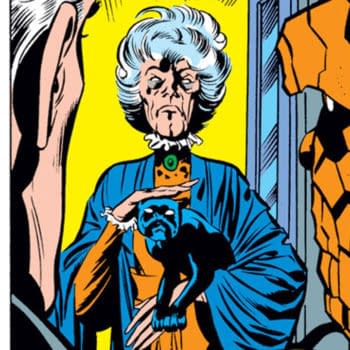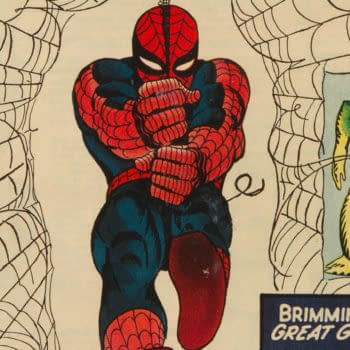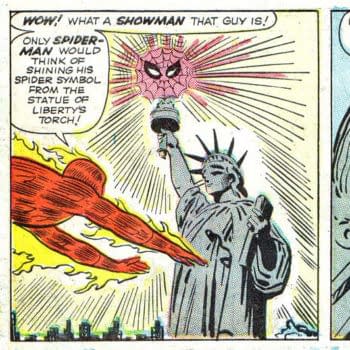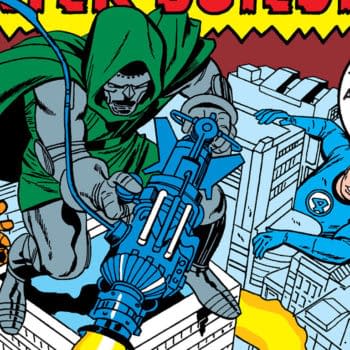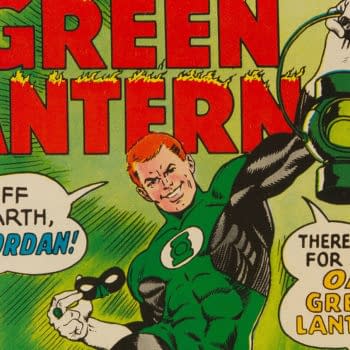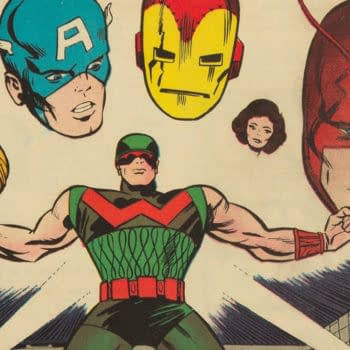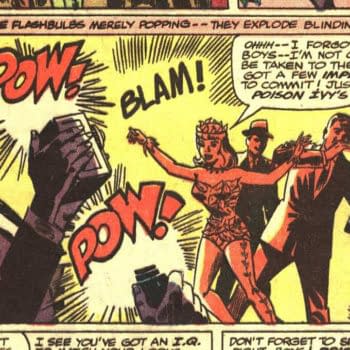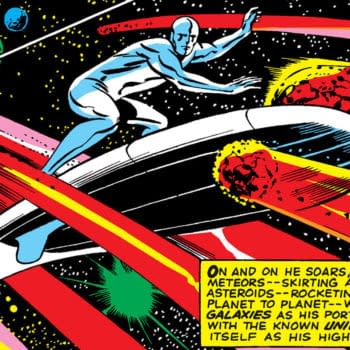An unlikely hero with unassuming beginnings, Herbie Popnecker has achieved cult classic status over the course of his 60+ year existence.
Silver Age Archives
If there's such a thing as overlooked Jack Kirby covers, his Silver Age romance work for Marvel might just fit the bill. Joe Simon and Jack Kirby had pioneered the romance genre in comics with Young Romance in 1947, so it should come as no surprise that Kirby had romance work mixed in among the monsters,[...]
This iconic issue is the first appearance of the Silver Age version of the Flash, written by Robert Kanigher, drawn by Carmine Infantino, and inked by Joe Kubert under the editorship of Julius Schwartz Long considered one of the most important comic books of the Silver Age. This copy of Showcase #4 last sold in[...]
This issue currently holds the esteemed #8 position on Overstreet's Top 50 Silver Age Comics list Overstreet 2023 NM- 9.2 value = $94,000 CGC census 12/23: 1 in 9.6, none higher.
In perhaps the biggest surprise of today's session of the 2024 January 11 – 14 Comics & Comic Art Signature Auction #7358 at Heritage Auctions, Brave[...]
Currently tied for #6 on Overstreet's list of Top 50 Silver Age Comics Overstreet 2023 NM- 9.2 value = $120,000 CGC census 12/23: 2 in 9.8, none higher.
2024 has gotten off to a strong start on the vintage comics scene, as the highest graded copy of Amazing Spider-Man #1 CGC 9.8 has just sold for a[...]
Showcase #4 (DC Comics, 1956) is the first appearance of the Silver Age version of the Flash, written by Robert Kanigher, drawn by Carmine Infantino, and inked by Joe Kubert under the editorship of Julius Schwartz Long considered one of the most important comic books of the Silver Age (and arguably, the most important), Showcase[...]
Collectors Summit is an event geared towards serious collectors of Golden Age to Bronze Age comic books, pulp magazines, original artwork.
Heritage Auctions is hiring comic book graders to work at their Dallas, TX location near the Dallas/Fort Worth International Airport. They are looking for candidates knowledgeable about Golden Age, Silver Age and later comic books, preferably with experience in comic book grading. In addition to grading comic books, other duties will include researching and estimating[...]
The Archie Comics franchise began to expand in earnest with titles that featured some of Riverdale's other most famous characters.
Global licensing of literary and artistic works has been a key component of publishing mass-market pop culture since international agreements governing copyright such as the Berne Convention began to gain acceptance and adaption in the 1880s. Comic book material has long enjoyed worldwide popularity, and the Golden and Silver Ages of comics saw many popular[...]
Bit by bit he blew the metal apart in a very straight line and that's how they wound up cutting that metal.
This aside, Doom Patrol has been an enduring and important DC Comics franchise for decades, including the current critically-acclaimed Doom Patrol series on HBO Max. A DC Comics key that has never quite attained[...]
Tales of Suspense #39 featuring the first appearance of Iron Man is one of my favorite Silver Age Marvel comic book keys based on the fascinating way it reflects its moment in time. Everyone knows that Tony Stark is based on real-life Billionaire industrialist Howard Hughes — even the USAF mentioned it when they discussed[...]
Because it's also a very good way to create a war comic without connecting it to any particular conflict, and that's likely what editor Robert Kanigher had in mind. The title had been focused largely on World War II stories for nearly eight years by the time The War That Time Forgot debuted in Star[...]
Matt Hagen, the Silver Age Clayface who was introduced in Detective Comics #298 (cover-dated December 1961), is a rare rebooted character who became more iconic than the original The Clayface who was introduced in Detective Comics #40 (June 1940) was merely an actor playing a movie monster, while Matt Hagen became much more, as the[...]
Global licensing of literary and artistic works has been a key component of publishing mass market pop culture since international agreements governing copyright such as the Berne Convention began to gain acceptance and adaption in the 1880s. Comic book material has long enjoyed worldwide popularity, and the Golden and Silver Ages of comics saw many[...]
The story of Namor the Sub-Mariner's return to comics in the Silver Age is one of the cornerstones of the Marvel Universe. But when he was revived by the Human Torch in Fantastic Four #4, he quickly discovered that Atlantis had been destroyed by underwater atomic testing, which turned him against the human race. The[...]
Fantastic Four Annual #2 (1964) gave us our first detailed look at the origin and backstory of one of Marvel's greatest villains, Dr. Doom.
Published in 1964 by Civil Rights educators, Harlem Youth Report #5 was part of an effort to study the issues facing Harlem in the 1960s.
Charlton's Unusual Tales series contains several stand-out examples of Steve Ditko's late-1950's science fiction and fantasy work.
Jack Kirby and Stan Lee meet Doctor Doom and put an interesting meta twist on the Marvel Universe in the process.
Agatha Harkness always seemed a little out of place against the super-science backdrop of the world of the Fantastic Four of the late Silver Age (or early Bronze Age if you prefer, this one is borderline), but that was undoubtedly part of the point. In need of a way to raise newborn Franklin Richards away[...]
Amazing Spider-Man #19 has a lot going on in it -- Sandman, the Enforcers, Human Torch, and the unassuming debut of Mac Gargan.
Silver Age Marvel was still taking shape at that point, and those first annuals hit the newsstands in 1962 about a week after the Human Torch took over the ongoing title itself with Strange Tales #101. Fantastic Four #7, Incredible Hulk #3, Tales to Astonish #36 (second issue of the Ant-Man series in the title,[...]
Many readers know that atomic radiation in one form or another was responsible for the development of the powers of some of the most important heroes at the dawn of Marvel's Silver Age, but radiation could take away such powers as well. Such was the case for one of Marvel's most memorable mid-1960s stories, which[...]
The infamous Guy Gardner first appeared in 1968 in Green Lantern #59 in 1968, but his debut appearance may not be what you expect.
Marvel's Wonder Man debuted -- and died -- in Avengers #9 in 1964, which may be the reason behind his enduring influence.
In the early Silver Age, it took Marvel a couple of times to learn its lesson with the color gray. The color was difficult to print with consistency during that time (and really… as someone with a lot of experience prepping color comics for print, I can tell you that subsequent decades sometimes didn't improve[...]
The Sub-Mariner is one of the definitive anti-heroes of the Marvel Silver Age, and the story of the Golden Age character's return to comics in the 1960s is part of the foundation of the Marvel Universe. But when he was revived by the Human Torch in Fantastic Four #4, he quickly discovered that Atlantis had[...]
Is the debut of Poison Ivy in Batman #181 a case of Robert Kanigher reacting to the ongoing Pop Art appropriations of the era?
Fantastic Four #48, with the introduction of Silver Surfer and Galactus, has been a Marvel milestone for decades.


